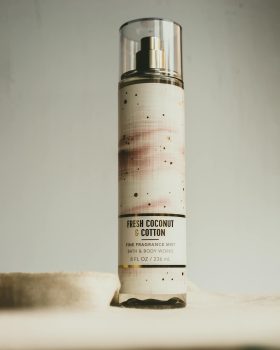Fashion brands operate in an environment where creativity, efficiency, and customer satisfaction must work together smoothly. Building a strong brand identity requires consistent messaging, appealing visuals, and high-quality products.
Internal productivity and customer support determine how well the business performs behind the scenes. When these elements align, fashion companies strengthen their reputation and create a seamless experience for customers. Achieving this balance takes intentional planning, smart resource management, and a commitment to long-term strategy.

Strategies That Balance Fashion Brand, Productivity, And Customer Care
Leveraging Smart Communication Tools To Maintain Customer Trust
Customer care forms the foundation of any successful fashion brand. Whether a company focuses on luxury wear, athletic apparel, or everyday basics, customer expectations are high. People want quick answers, clear communication, and support they can rely on.
Responding to messages across multiple channels can overwhelm small or growing fashion teams. This is where modern communication tools become valuable. Many brands explore virtual answering services such as those at https://myreceptionist.com/ to ensure every customer inquiry receives prompt attention. Outsourced reception and support teams help businesses stay responsive even during busy production periods, photo shoots, or seasonal rushes.
With professional call handling, appointment scheduling, and message forwarding, fashion brands create a polished, reliable customer experience without stretching internal resources too thin.
Strengthening Brand Identity With Consistent Messaging and Design
A fashion brand thrives when its visual and verbal identity remains clear across all platforms. Consistency helps customers recognize the brand instantly and understand what it represents. This includes logo design, color palettes, typography, tone of voice, and aesthetic direction.
To maintain productivity, brands should create clear guidelines that cover packaging, website design, social media visuals, and product presentation. These guidelines function as a roadmap for internal teams and external partners, ensuring every piece of communication, whether digital or physical, aligns with the brand’s core identity.
Maintaining consistency reduces decision fatigue among designers, marketers, and content creators. When the visual framework is already defined, teams can produce creative work faster without sacrificing quality. This balance improves efficiency while strengthening the brand image.
Streamlining Operations With Efficient Workflow Systems
Behind every stylish collection lies a complex web of production steps, supplier coordination, inventory tracking, and marketing tasks. Without a solid internal system, productivity suffers. Fashion brands benefit from using digital tools that help manage timelines, track materials, and monitor sales patterns.
Project management platforms allow teams to assign tasks, monitor progress, and stay organized. These systems reduce confusion between departments and help prevent costly delays. Inventory software ensures stock levels remain accurate, preventing overselling or shortages during high-demand periods.
Efficient operations lead to happier customers. When orders ship on time, tracking information is reliable, and returns are handled smoothly, the customer experience improves. A productive internal structure supports both brand growth and customer satisfaction.
Using Customer Data To Personalize and Improve Experiences
Fashion customers appreciate personalization. They respond well to curated recommendations, timely promotions, and communication that reflects their preferences. Data analytics tools allow brands to track purchase patterns, browsing behavior, and engagement levels.
By analyzing this information, fashion companies can better understand which products resonate with customers, when they are most likely to shop, and what styles attract different segments. Personalized email campaigns or targeted product suggestions help increase conversions while making customers feel valued.
Personalization must remain purposeful and respectful. Brands should avoid overwhelming customers with excessive messages. Thoughtful, data-driven strategies support stronger relationships and sustained sales.
Building a Culture of Creativity Without Compromising Productivity
Creativity drives the fashion world, but it requires balance to avoid burnout or production delays. Teams need time to brainstorm, experiment, and refine ideas while still meeting deadlines. Creating structured creative sessions, such as scheduled design reviews or innovation workshops, helps direct energy productively.
Encouraging collaboration between design, marketing, and production teams ensures ideas move from concept to reality efficiently. When everyone understands timelines and project goals, creative processes become more manageable and less chaotic.
Maintaining Customer Support During Seasonal Peaks
Seasonal spikes, such as holiday shopping or new collection launches, create intense pressure on fashion brands. Customer service inquiries multiply, production schedules tighten, and inventory demands rise. Planning ahead helps maintain balance during these periods.
Brands should increase staffing support, adjust marketing calendars, and prepare inventory backup plans before peak seasons. Automated tools like chatbots or self-service portals can capture basic inquiries, reducing strain on human staff.
With strong preparation, customers still receive fast, supportive interactions even during the busiest times. This reliability reinforces trust and strengthens the brand’s reputation.

Strategies That Balance Fashion Brand, Productivity, And Customer Care
Sustainable growth depends on customer retention. Strong service, consistent branding, and efficient operations encourage repeat purchases and positive word-of-mouth. With a balanced strategy, fashion brands build stability while continuing to evolve creatively.
Fashion businesses thrive when productivity, branding, and customer care work in harmony. By adopting supportive tools, maintaining consistency, and planning strategically, companies create a strong foundation for lasting success.

A dad of 3 kids and a keen writer covering a range of topics such as Internet marketing, SEO and more! When not writing, he’s found behind a drum kit.











